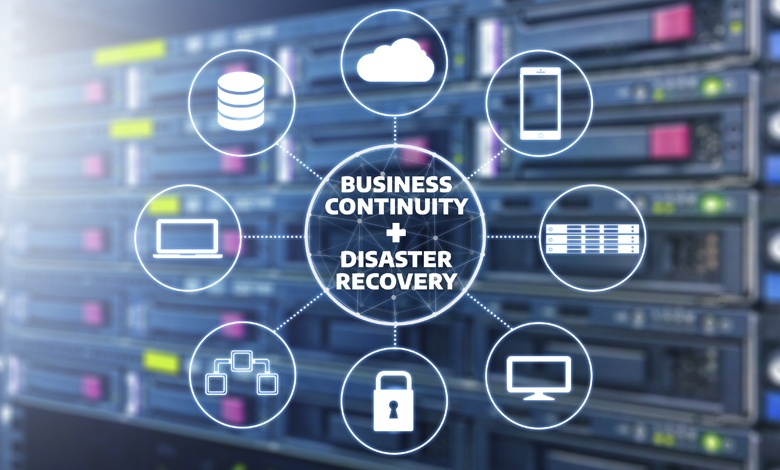If the past year has taught IT and business leaders one thing, it’s to expect the unexpected. And more critically, to have the plans in place to adjust and adapt quickly and effectively. From the rapid shift to remote work to the growing number of cybersecurity attacks in the wake of COVID-19, the last 18 months have been a master class in resiliency.
However, all too often, business strategies look at disaster recovery functions and their business continuity planning as two separate functions. When a real crisis strikes, you need the capability to stay online, get back up to speed quickly, and know that your data is protected throughout the experience.
Here is a closer look at the business case for why your 2021 strategy should include both continuity and disaster recovery as pillars of an integrated approach to business resiliency.
Understanding Business Continuity
Businesses typically treat business continuity and disaster recovery as two separate functions within IT. Business continuity focuses on the plan you have in place to keep key systems operating when disaster strikes. By having a plan in place that protects your most critical functions, you can continue to help employees be productive and simplify the process of serving customers.
Whether you experience an unexpected weather event, get hacked, or there’s a critical technology outage, your employees and customers can’t complete the business of the day without access to critical systems. Continuity planning may include plans for how the business will operate remotely or failsafe solutions that kick in to keep applications online and data accessible when primary systems fail. Business continuity plans typically:
- Assess an organization’s unique risk landscape
- Highlight the most essential systems and priorities to keep operational
- Set targets for getting key systems or processes back online
- Quantify the impact or risk of downtime and how it would affect the business
- Identify the tools, strategies, and teams needed to support business continuity
- Develop baseline plans that can be continuously updated and offer an actionable reference to employees when a disruption occurs
The Role of Disaster Recovery
Disaster recovery, by comparison, is all about the scenario planning and how you’ll respond in the event of specific incidents. It picks up after the immediate crisis has been dealt with, and refers to issues such as restoring data, recovering interrupted applications, and getting back to normal operations. According to FEMA, 40% of small businesses fail to reopen after a disaster, and 25% of those that do reopen will close within a year of a significant disaster.
Disaster recovery gets into the tactical step-by-step solutions the business will utilize to reestablish minimum functionality. Disaster recovery plans typically include:
- Detailed guidance for getting systems functioning effectively
- Specific tools or support services that can aid with the restoration of data
- Outside partners, in the form of as-a-service offerings, that can aid in disaster recovery with specialized expertise as required
- Reference documents that outline critical processes your subject matter experts can use to help eliminate delays—especially if relying on processes that don’t get used frequently
- Testing procedures that stress test disaster recovery solutions to ensure they’ll deliver in a crisis
Neither Is Enough on Their Own
The fundamental goals of each of these areas are different, though complementary. Business continuity plans help limit downtime, and disaster recovery is the strategy your business will use to bring data and systems back online to full performance. However, it’s not until you combine the two that you’re ready for agile, effective responses to disastrous events.
What does that look like in practice? The unprecedented challenges of the past year have highlighted why companies need policies, procedures, and technologies in place to stay resilient. However, continuity and disaster recovery have often been treated as unrelated silos. They may be planned in isolation, implemented by different teams, and even rely on tools and services that don’t communicate well. Business resiliency is changing the way business and IT leaders look at these critical pieces of the IT infrastructure and strategy road map.
How to Cultivate Business Resiliency
If an organization is ready to commit to a more robust approach to business resiliency, Connection can help. Business resiliency is a detailed, end-to-end process and set of tools that helps organizations:
- Identify the full range of potential disaster and threats that could affect their business, from natural disasters to cyberattacks
- Highlight the most critical systems, data, and parts of the business that need to be brought up to operating at standard levels
- Communicate the company’s priorities for both employees and customers
- Assess the business’s current human capital and technology infrastructure—as well as policies—to identify gaps and opportunities for improvement
- Address basic security challenges and provide a roadmap for additional related security offerings
- Plan and implement industry-leading technology deployments to support continuity and disaster recovery
- Explore managed services solutions, as appropriate to a unique situation
- Reduce communication silos and help teams work together effectively through clear, prioritized instructions
An effective business resiliency strategy is a crucial component of your business’s IT and overarching planning. Even if you’ve got strong disaster recovery and business continuity plans in place, if they’re operating as separate strategies they’re failing to develop a strong, effective, long-term scaffold that will keep your business thriving and operational no matter what unexpected challenges you encounter. If you’re ready to take the first step but not sure where to start, Connection can help. Contact us today to learn more about our business resiliency services and solutions.

